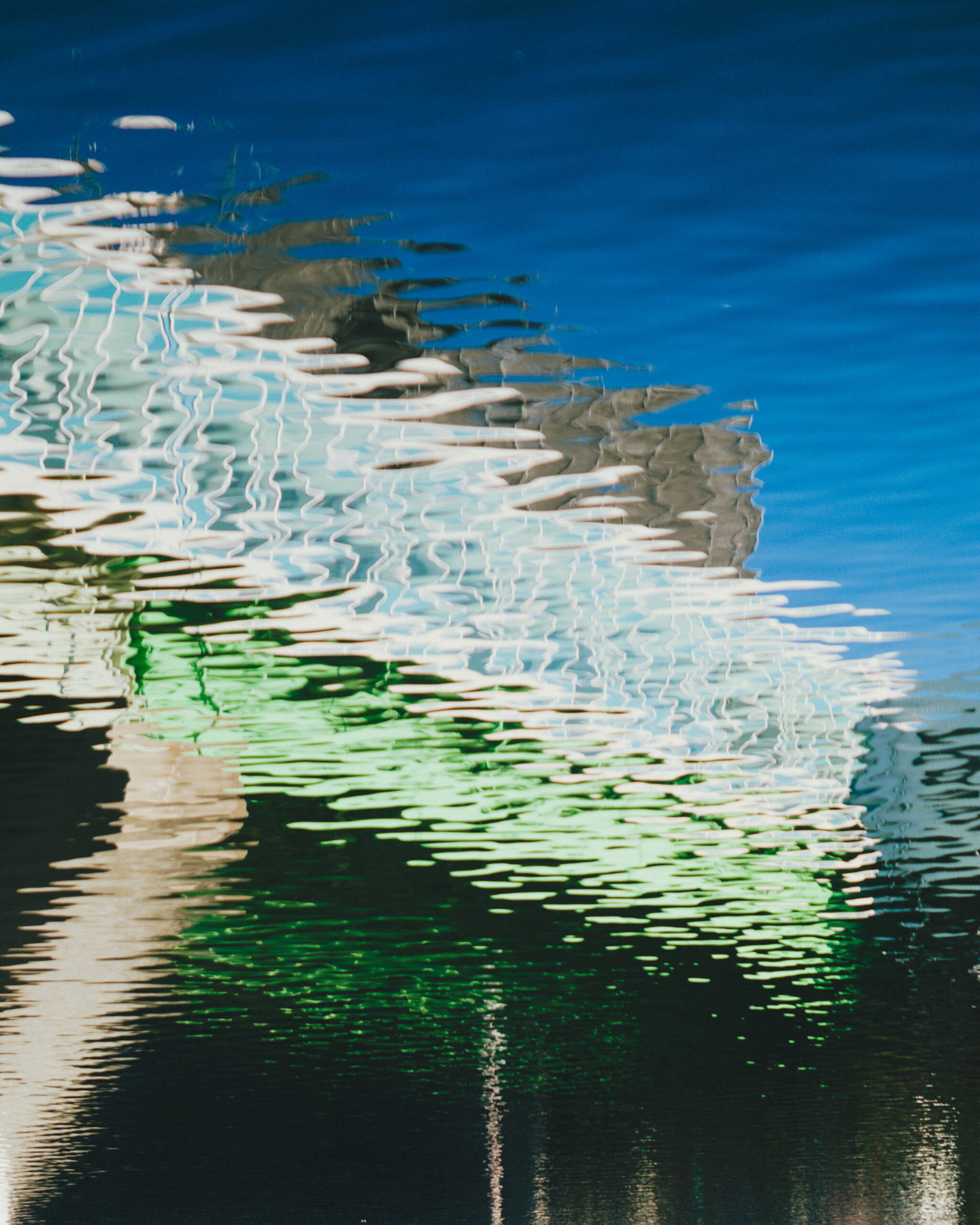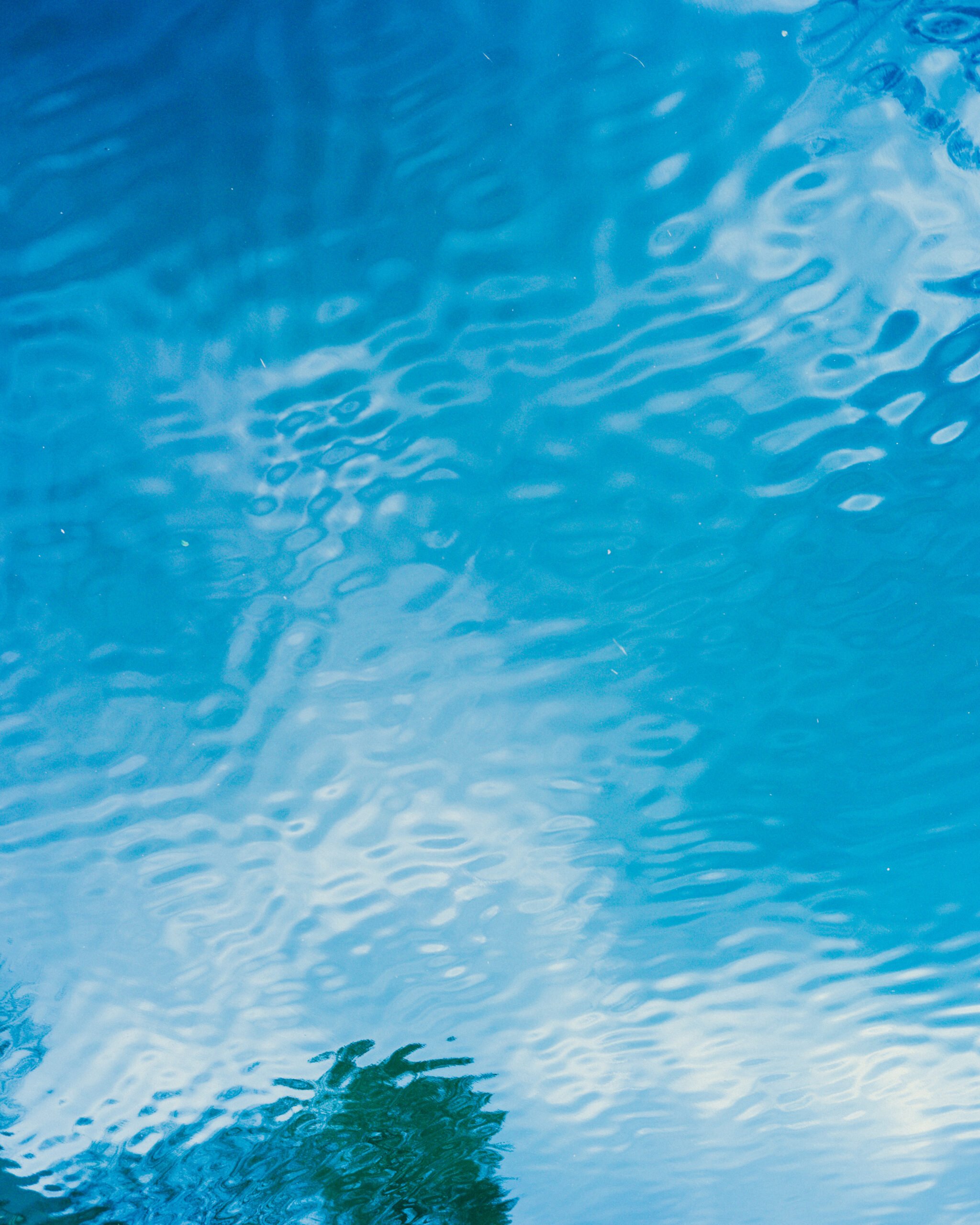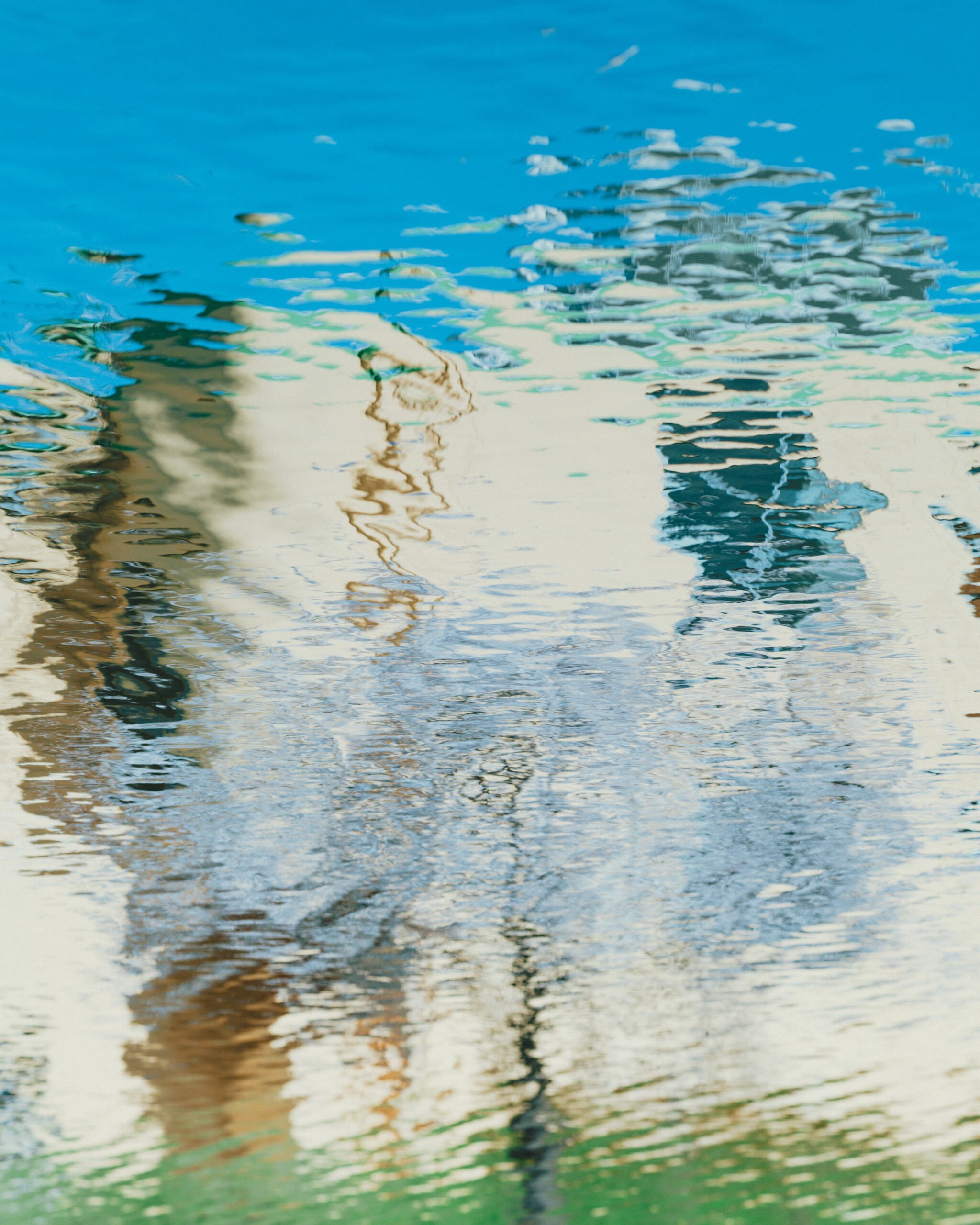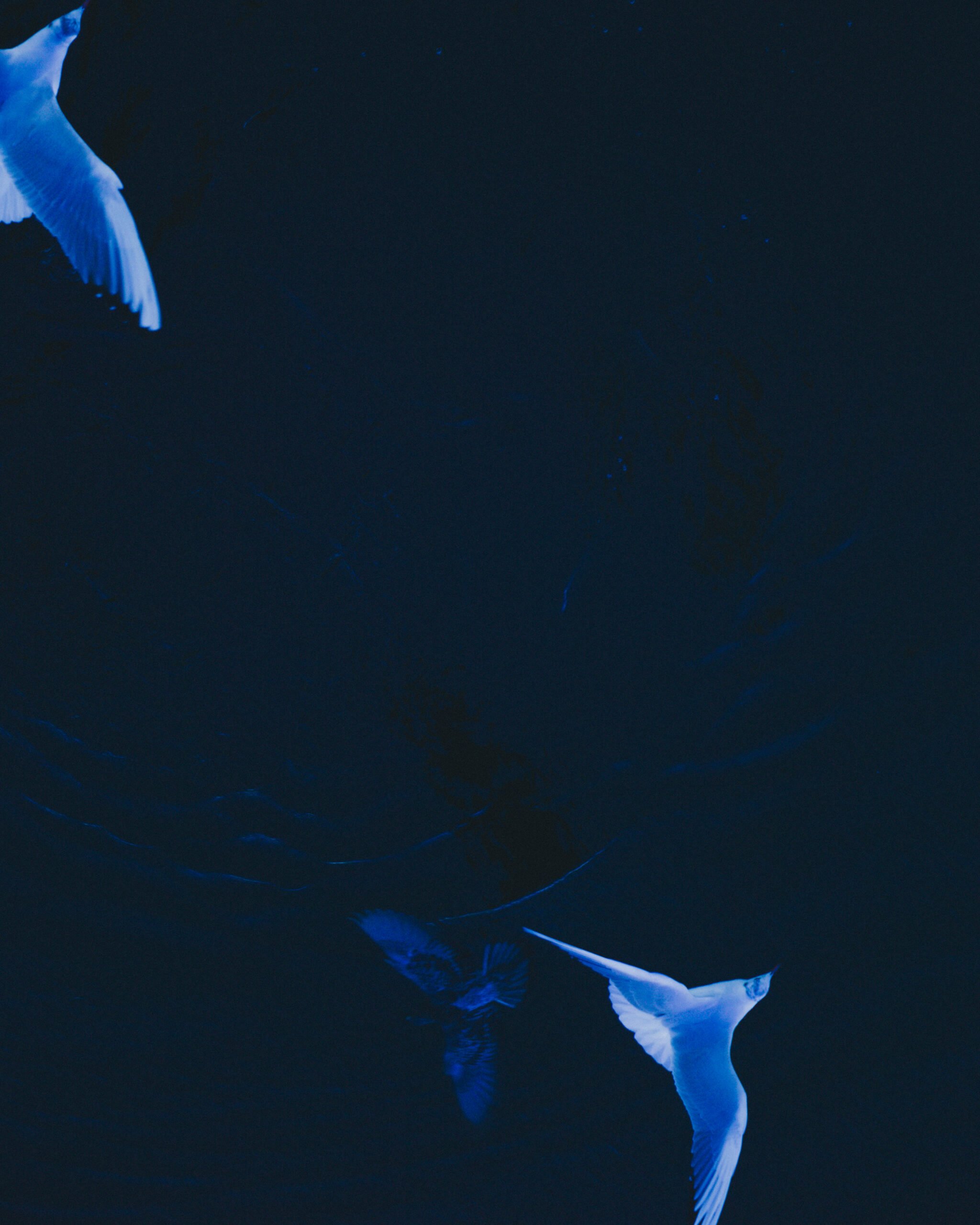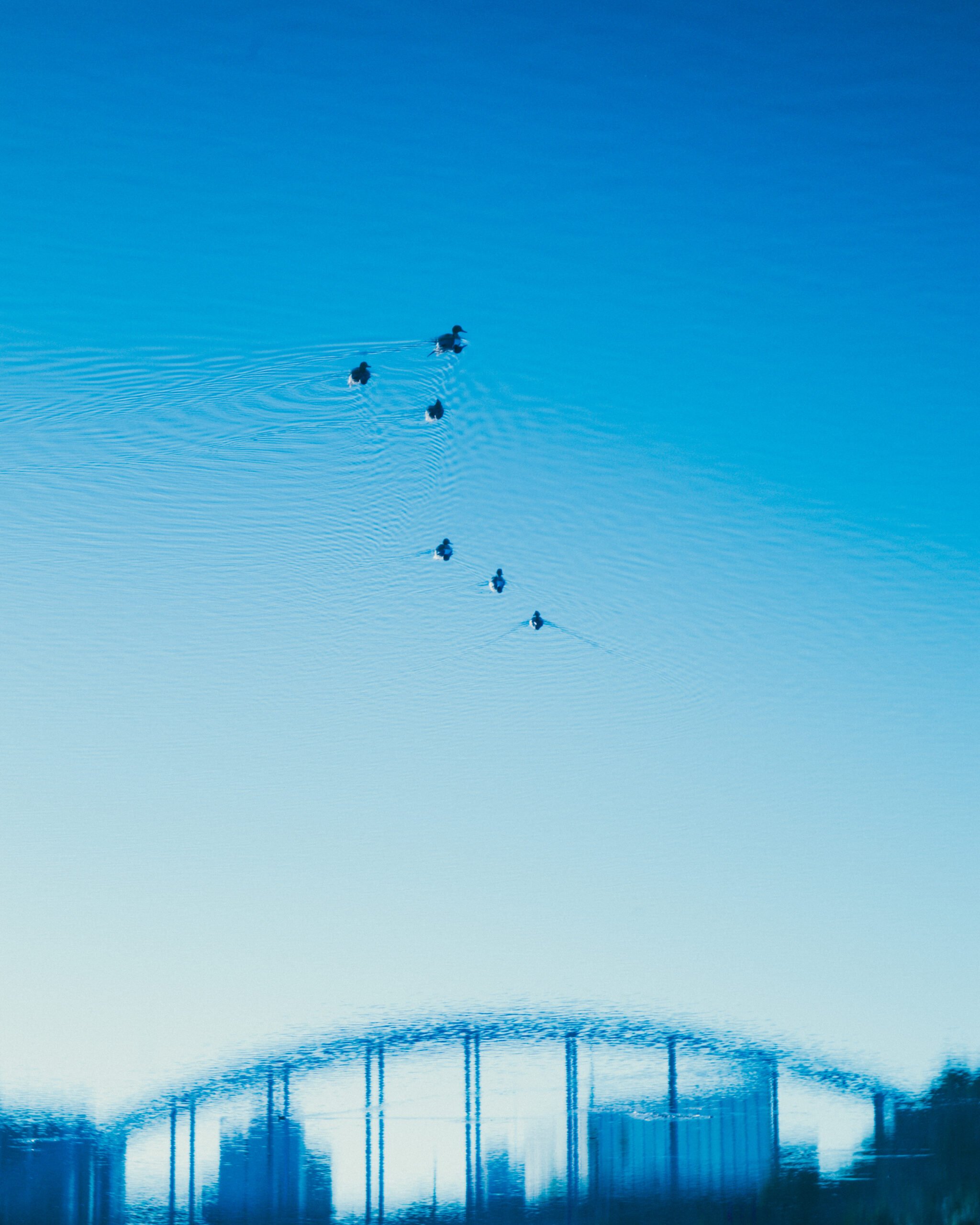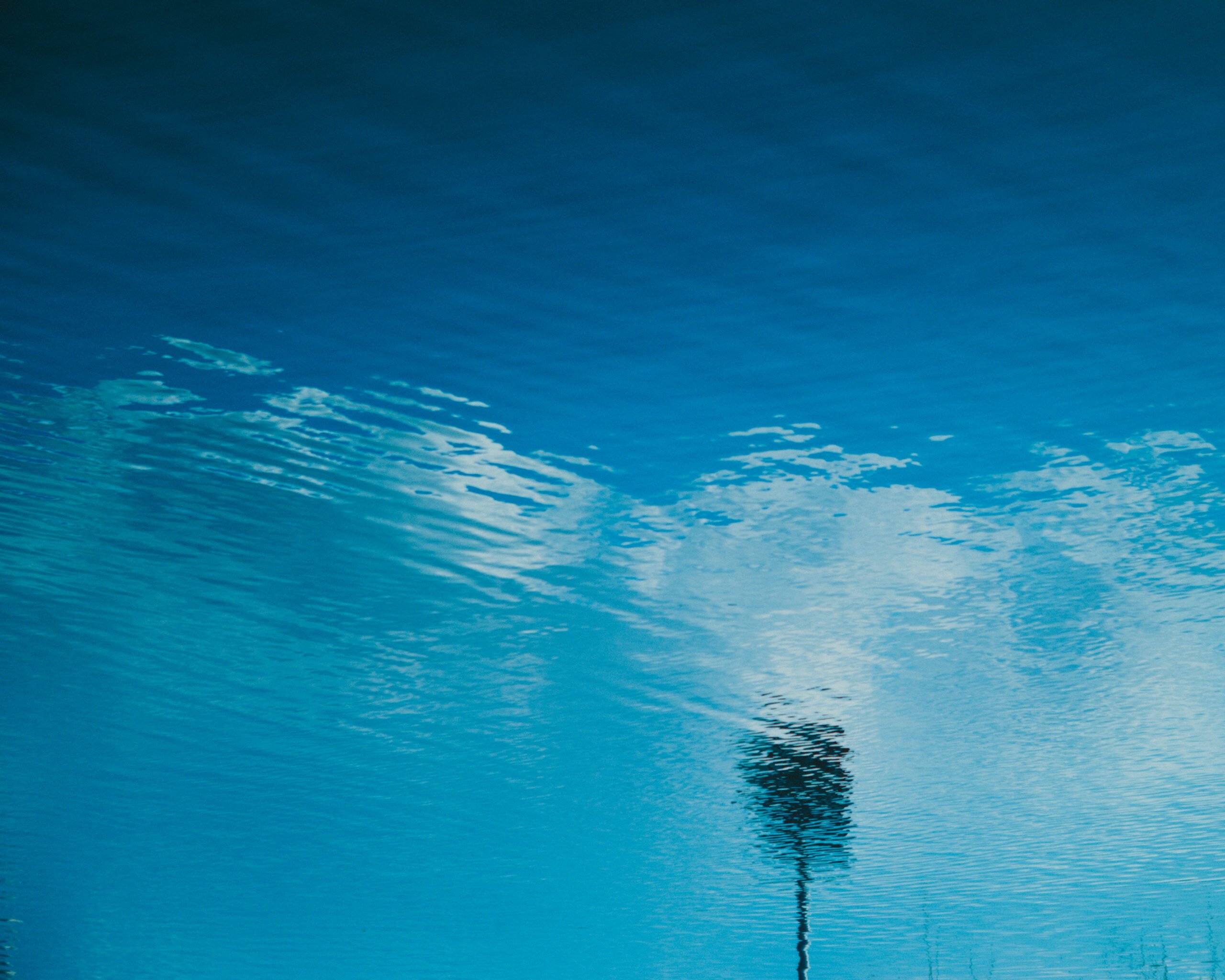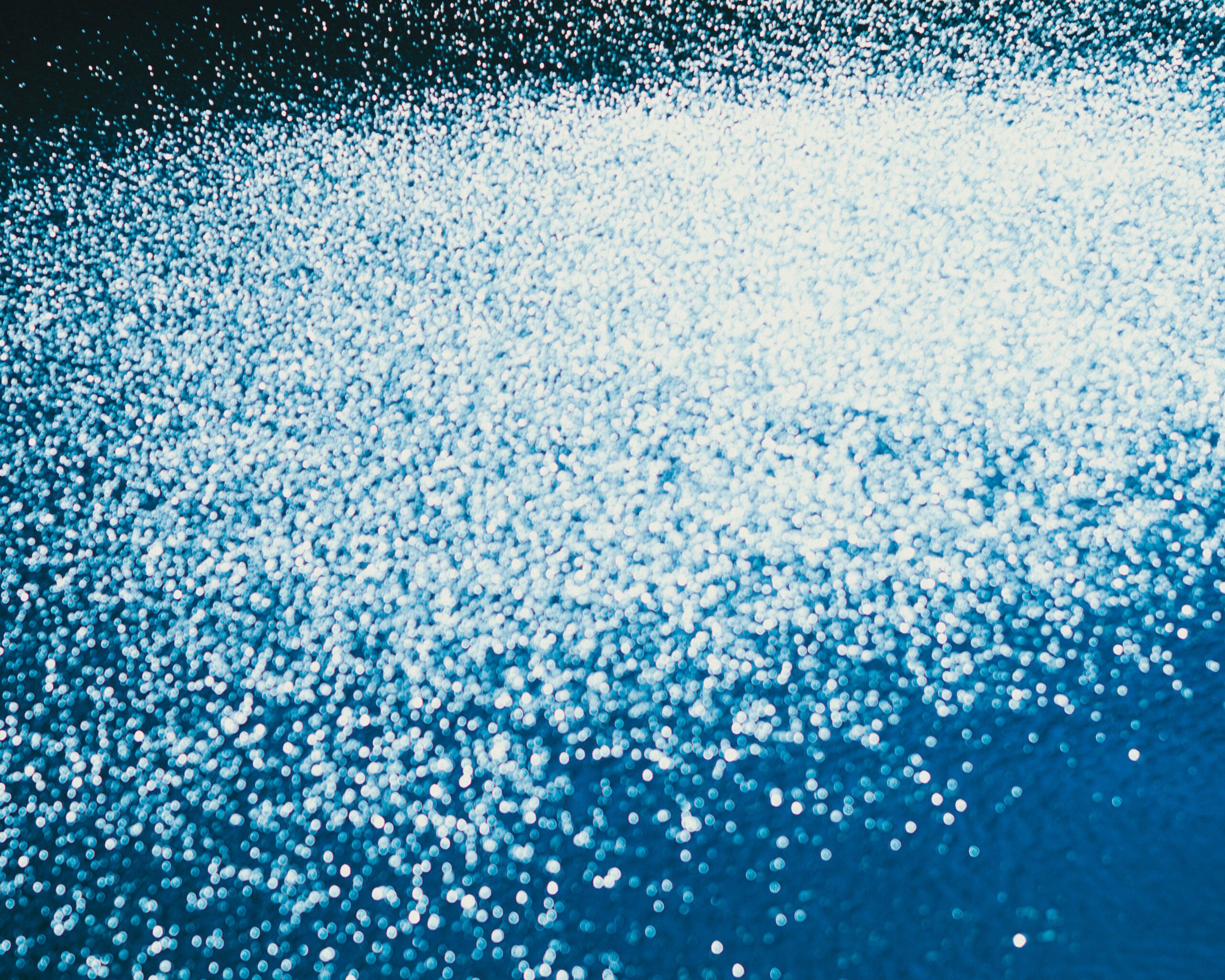CATEGORY
AREA

Photographer Kawaharazaki Nobuki held his solo exhibition “RIVERSAL LETTER” in February 2025. The works presented there featured scenes of Tokyo reflected on the surface of a river. Buildings and other structures appeared vividly in the water’s reflection, creating an impression that was both fantastical and warm. Yet Kawaharazaki refers to these photographs as “family photos.” We asked him about the meaning behind that description.
In your exhibition and photo book RIVERSAL LETTER, you showcased images of landscapes reflected on the surface of a river. How did this concept originate?
Kawarazaki
After my child was born, I was living a happy life, but at the same time, I felt as though I had stalled as a photographer. I didn’t want to blame that on changes in my lifestyle. Instead, I began to think: what could I create because my child was born? That was the beginning. The river I photographed this time is the Old Nakagawa River, which runs across from my child’s nursery school. At first, I was just pushing the stroller and noticed how beautiful the reflections were. That’s what first drew me in.
Have you always liked rivers?
Kawaharazaki
Yes, I think so. I’ve always had a connection to rivers. I was born in Osaka, near the Yamato River, and I used to spend time reflecting or jogging along its banks. When I moved to Tokyo, I first lived near the Shin-Nakagawa River, and during my assistant years, I often walked along it. So I guess it’s only natural that I’ve always liked rivers.
So rivers have always been part of your daily life?
Kawaharazaki
Exactly. Even when I decided to make a photo book, I couldn’t immediately think of what to shoot. I was struggling, and then I realized that the river I always saw might be the right subject. After all, if you don’t love what you’re photographing, you can’t keep doing it. Also, I felt that the texture of the water’s surface overlapped with my emotional state at the time. I was questioning whether I was okay with how I was as a photographer. I’d get anxious or unsettled over the smallest things. That kind of emotional turbulence felt a lot like the ripples on the water’s surface.
But I think those emotions aren’t unique to me—they’re something we all experience. The way the surface of the water trembles with the slightest disturbance is a lot like human emotions. When I thought about my son, I found myself hoping that he could also grow up embracing those fluttering, uncertain feelings. That parental hope is what led me to include the word “LETTER” in the title.
So “RIVERSAL LETTER” is also a letter to your child?
Kawaharazaki
Yes. It’s hard to put into words—this idea of “a letter from a father to his son.” I was never clearly told anything by my own parents either. Still, I do hope that twenty years from now, my son will be able to receive the message. The book’s design also reflects that idea of a letter. I intentionally left the cover blank—no photos—to give it the feeling of an envelope. The word “RIVERSAL” is a play on “REVERSAL,” but I changed the spelling to include “river” because the works center on rivers. Both the title and the design were ways for me to shape something deeply personal—a message to my son.
While the theme is deeply personal, the images—cropped like abstract paintings—feel soothing and moving to any viewer. How long did the project take?
Kawaharazaki
About a year and a half. One of the themes was “the shifting nature of human emotion,” so I took my time. For this project, I didn’t just show the reflections as they appeared. I flipped the images so the reflections aligned with the actual orientation of the subjects. The ripples distort the image, of course, but that distortion is beautiful in itself. I hope viewers can accept those wavering emotions just as they are.
Was there anything you were particularly conscious of when composing the photo book?
Kawaharazaki
Toward the end of the book, I included more photos with light. That reflects my hope that my son will live his life with hope. Since this project was inspired by my son, I consider it to fall under the genre of “family photography.” That’s why, for the exhibition as well, I aimed to create a space that didn’t feel too cold or avant-garde, but instead had a certain warmth to it.
Could you tell us a bit about yourself? What first led you to photography?
Kawaharazaki
I had obtained a teaching license at university in the education field, but I wanted to consider other paths I studied education in university and even got a teaching license. But when I started thinking seriously about work, I wanted to explore paths beyond teaching. I’d always had a vague admiration for the world of advertising and magazines. But honestly, I didn’t even know what I really liked at the time. It was around when smartphones were starting to become popular, and I just enjoyed taking pictures and sharing them with friends. So in my fourth year of college, I started attending a photography vocational school while still at university, and I contacted professional photographers to ask if I could work as their assistant. When it came time to job-hunt, I joined a studio in Tokyo.
— While working at the studio, what kind of photography did you aspire to create?
Kawaharazaki
I was influenced by photographers Osamu Yokonami and Orie Ichihashi. I originally entered the world of photography from a digital background, and was so struck by their style that I began to work with film in reverse. But even if I handled film myself, I would never be able to shoot in the same way (laughs). The atmosphere of those photographs is really amazing.
What influences your creative process?
Kawaharazaki
I I love comedy, so I often feel the urge to include a little touch of humor that makes people chuckle. I love comedy, so I often feel the urge to include a little touch of humor that makes people chuckle. That’s also why I love the slightly surreal mood in Yokonami’s work. As for comedians, I’m a big fan of“Bakarhythm”, “Takine”, and “ Biscuit Brothers”. One of my dreams is to photograph “Chihara Junior”—he’s someone I truly admire. Also, when I was an assistant, my mentor told me to experience all the music and films he enjoyed. That’s how I discovered artists like “Happy End” and “Kirinji”. I feel like those experiences are still very much alive in my work today.
After “RIVERSAL LETTER”, what kind of project would you like to work on next?
Kawaharazaki
I really like the view of Tokyo through the glass on a rainy day, and I'm thinking that if I had about 5,000 photos of just that, I could have fun. I like how the light and reflections of the buildings change with the water flowing through the windows, creating a unique texture. Water is interesting, after all. I guess I like water because I find it fun to photograph it (laughs).
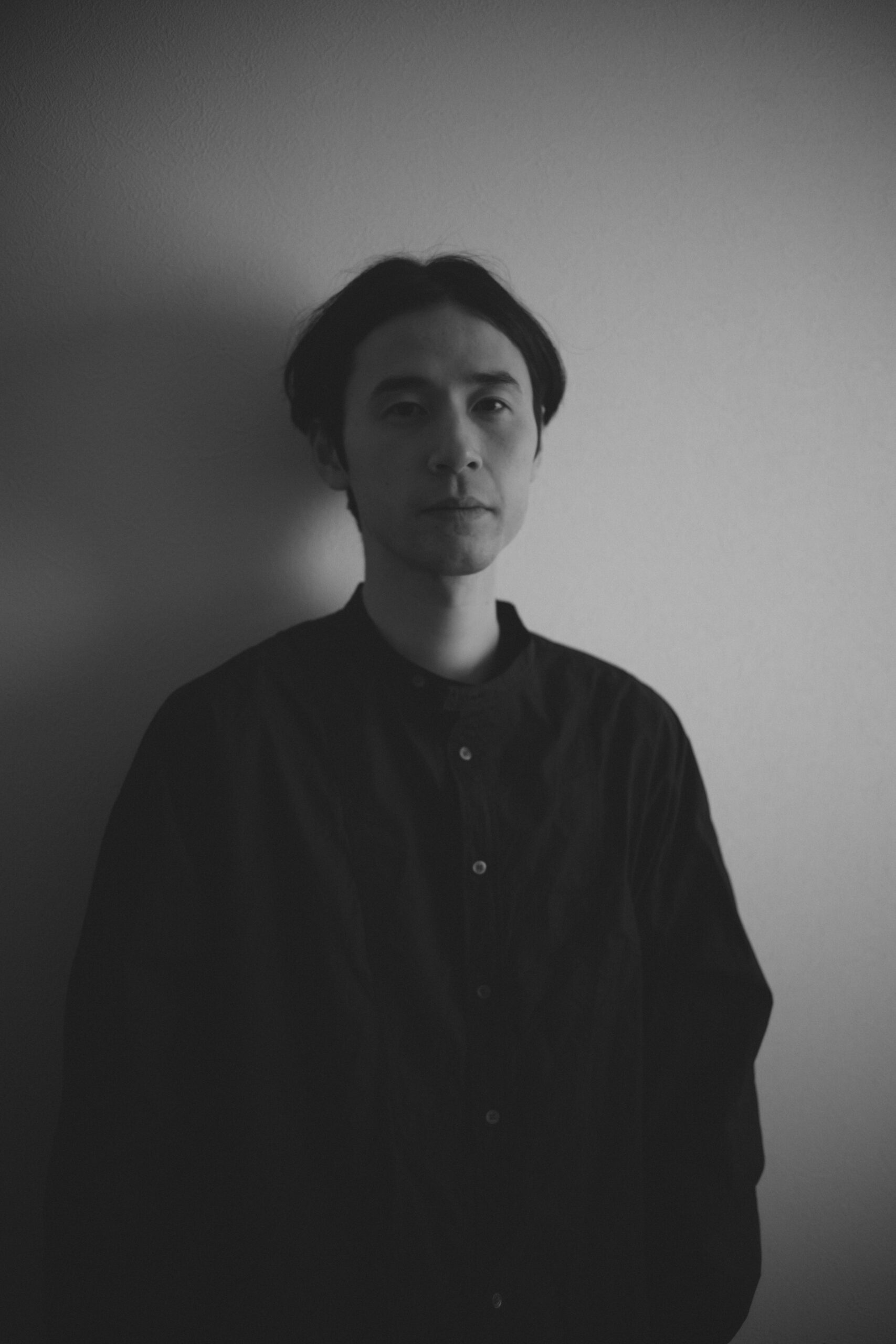
Photographer based in Tokyo. After graduating from the Department of Clinical Education at Kwansei Gakuin University, he began working at a studio and assisting professional photographers in 2017 before going independent. He now works mainly on magazines, catalogs, and advertising projects. His photo books include “kaleidoscope”and “Gege (解夏)”, with his latest work, “RIVERSAL LETTER,” released in 2025.
Instagram:
https://www.instagram.com/nobukikawaharazaki/
Online Shop:.
https://kawaharazaki.buyshop.jp/
Portfolio:.
https://nobuki-kawaharazaki.squarespace.com/
